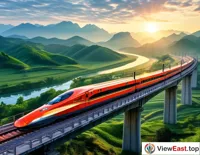

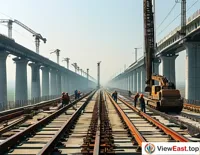
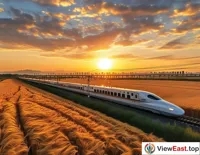
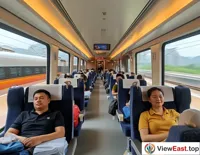

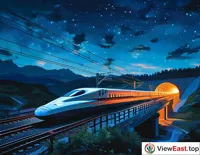
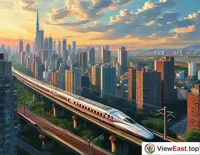
China High-Speed Railway: A New Choice for Green Travel
Across the vast expanse of China, silver serpents of high-speed railways crisscross the land, not only connecting cities but also bridging the past and the future. They are symbols of Chinese speed and the new choice for green travel. This article will take you on a journey through time and space to appreciate the development miracle of China's high-speed railways and how they are leading the new trend of green travel.
Starting: Catching Up with the World's Pace
The story begins in 2008 when China's first high-speed railway, the Beijing-Tianjin Intercity Railway, officially commenced operations, marking the beginning of the high-speed rail era in China. The completion of this railway not only reduced travel time between Beijing and Tianjin but also initiated the rapid expansion of China's high-speed rail network, growing like bamboo shoots after a spring rain.
Development: Weaving a Network for Green Travel
As time progressed, the development of China's high-speed railways accelerated. In 2010, the opening of the Wuhan-Guangzhou High-Speed Railway reduced travel time between Wuhan and Guangzhou to an astonishing 3 hours. The rapid development of China's high-speed railways has not only greatly facilitated travel but, more importantly, played a significant role in energy conservation and emission reduction. Compared to traditional roads and air travel, high-speed rail consumes less energy and causes less pollution, making it a true green travel option.
Achievements: World-Leading Speed
By 2023, the operational mileage of China's high-speed railways exceeded 40,000 kilometers, accounting for more than two-thirds of the world's total high-speed rail mileage. China's high-speed railways lead the world not only in speed but also in technological innovation. From the "Harmony" to the "Renaissance" train sets, China's high-speed train technology has been continuously upgraded, with operating speeds reaching 350 kilometers per hour and beyond. These achievements are backed by China's relentless pursuit of high-speed rail technology and substantial investment.
Innovation: Integration of Intelligence and Green
The development of China's high-speed railways is not limited to speed and mileage but also explores the integration of intelligence and green initiatives. Intelligent ticketing, facial recognition for entry, and the application of unmanned driving technology have made China's high-speed rail services more convenient and efficient. Moreover, China's high-speed railways adhere to green development concepts during construction, using environmentally friendly materials, reducing noise pollution, and protecting the ecological environment.
Future: A Bridge Connecting the World
Looking ahead, China's high-speed railways will continue to expand their network, not only forming a more comprehensive transportation network domestically but also exporting high-speed rail technology to various parts of the world through the Belt and Road Initiative, becoming a bridge connecting the globe. The development of China's high-speed railways is not only a revolution in China's transportation history but also a leap forward in global green travel.
Story: The Transformation of a Small Village
In this story, we can feel the changes brought by China's high-speed railways through the transformation of a small village. Once, the village was slow to develop due to inconvenient transportation. However, with the opening of high-speed rail, the village's connection with the outside world became much closer. Agricultural products can be quickly transported to cities, and tourists can easily travel to the village for tourism, leading to rapid economic development and a significant improvement in the quality of life for the villagers.